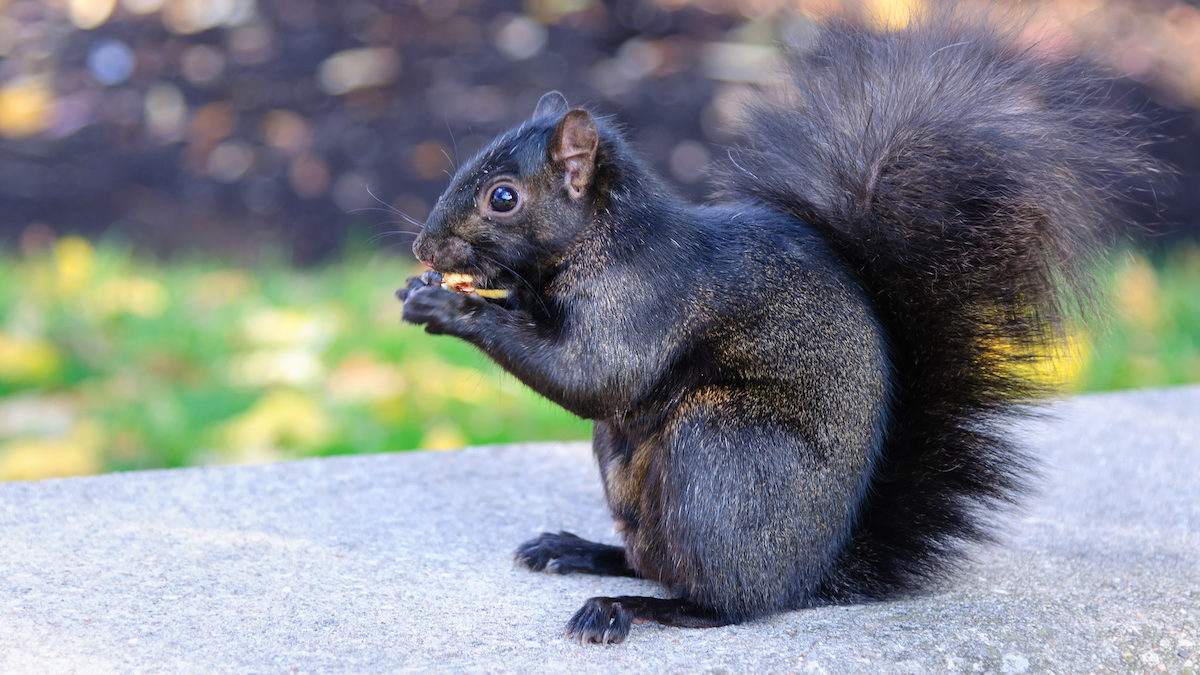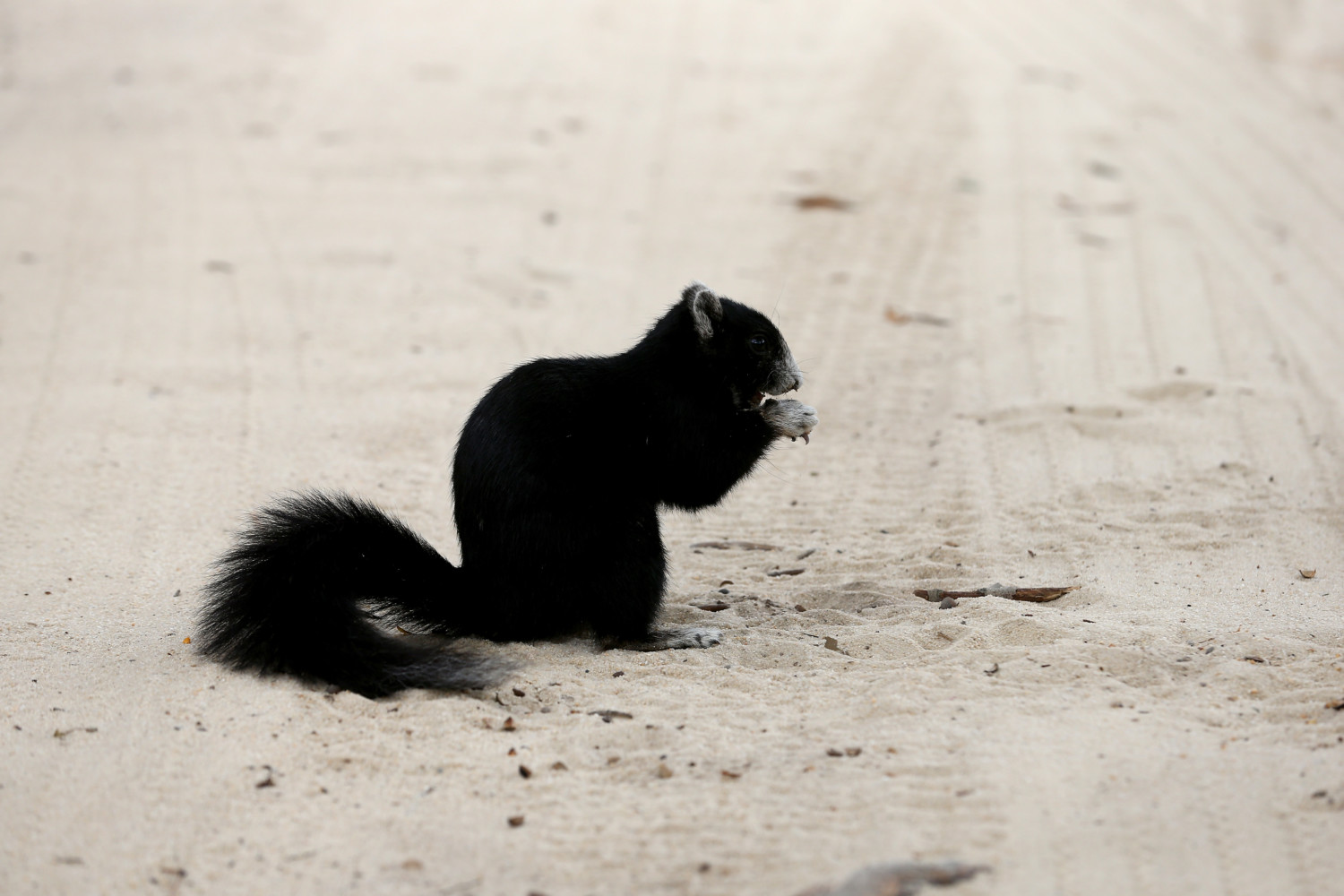Here’s why some squirrels are black

When it comes to squirrels, you’re probably used to seeing those furry gray ones. Still, you may have noticed a recent uptick in squirrels with shiny black coats in America and, now, scientists know why.
According to a recent study, scientists now believe we’re seeing more and more black squirrels due to the interspecies breeding of the common gray squirrel with fox squirrels.
Fox squirrels are typically darker in color and can, therefore, pass a darker coat along to their offspring. According to this new research, however, black fur actually results from a genetic mutation. This explains why the black squirrel is somewhat rare, making up for an estimated one in every 10,000 squirrels.
If you’ve spotted one of these little guys out and about, consider yourself lucky. It’s a pretty uncommon sight. If you’ve yet to spot a black squirrel in the wild, here’s what they tend to look like:
Black squirrels may be more common in certain areas, making them even more of a challenge to spot. According to Mental Floss, Kent State University students released black squirrels on the campus in 1961 and, since then, the squirrel has become a pretty common sight on campus.
Another study referenced by Squirrels At The Feeder notes that fur color may not be the only difference caused by the gene mutation, with researchers positing that black squirrels may be better suited for cold weather than their gray and fox squirrel parents. Researchers found that black squirrels can generate more body heat and lose body heat less rapidly than other squirrels, so we’re more likely to see these animals in colder climates.
Animals with gene mutations can be fascinating finds and, unsurprisingly, black squirrels are only one example of oddly-colored animals. It took nature lover Hans Nilsson three years to track down a rare white moose, but he finally managed to catch one on video back in 2017. Since then, his video has been watched over 4 million times, proving just how truly mesmerizing these animals can be.
Moose biologist Lee Kantar told National Geographic that it’s “extremely rare” to catch a glimpse of an albino moose, noting that he’s never come across any himself.
See the video of the moose Nilsson tracked down, which was shared by “Good Morning America” on Facebook:
It may be more likely to find a black squirrel than a white moose, but both would be pretty interesting to see up close. So be on the lookout!


